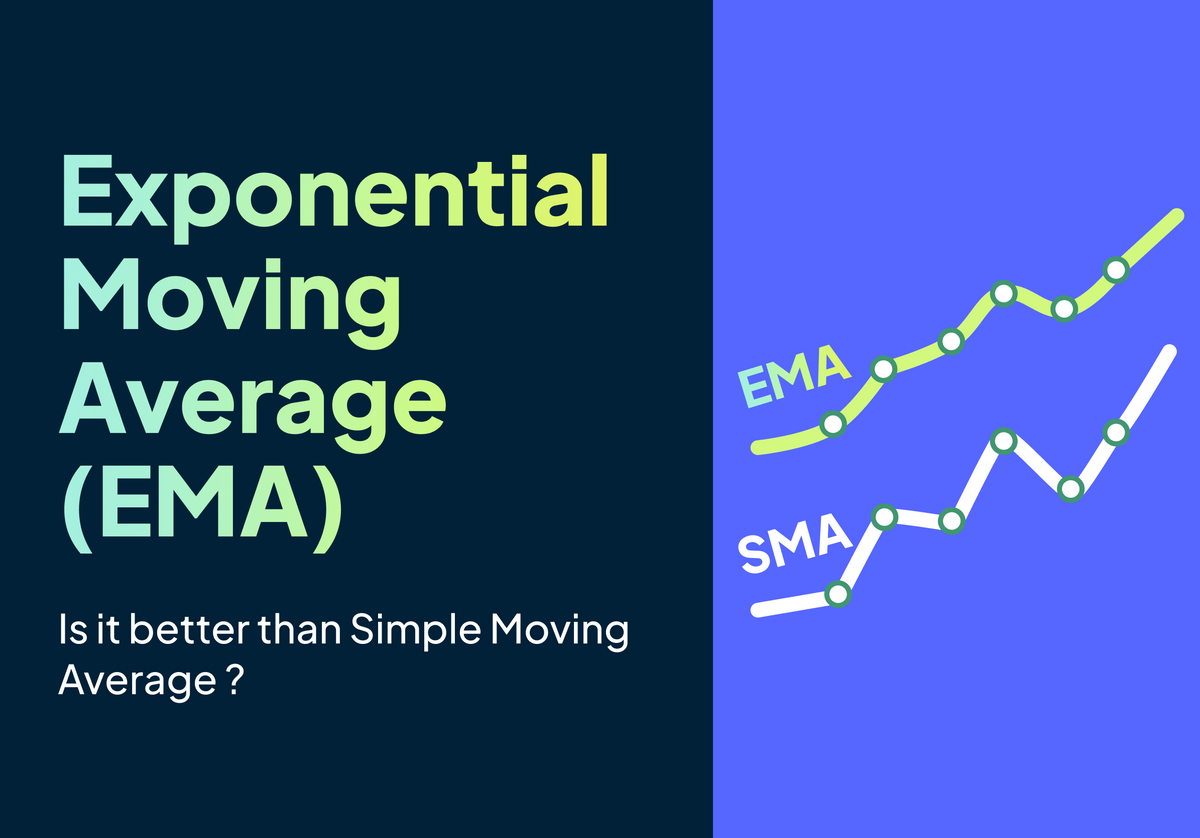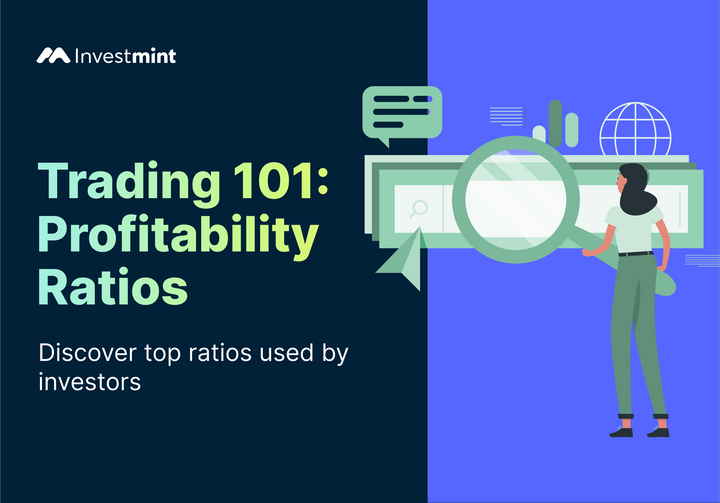What Is Exponential Moving Average (EMA)? Is It Better Than Other Indicators?
EMA or Exponential Moving Average is a useful and versatile indicator for traders. Discover EMA's workings, advantages, and how it complements other indicators for informed trading.

Let's Talk About Technical Indicators
In the world of technical analysis, moving averages play a crucial role in assessing price trends and smoothing out market noise. They calculate the average price over a specified period and plot it on a chart.
Each data point in the moving average represents the average value of the underlying data within a specific period. Moving averages help eliminate short-term price fluctuations and provide a clearer picture of the overall price direction. Simple Moving Average (SMA) and Exponential Moving Average (EMA) are two common types of moving averages.
In this article, we will delve into the concept of EMA, its calculation methodology, and its advantages & limitations. We will also highlight the importance of combining it with other EMA indicators and fundamental analysis for comprehensive decision-making.
What Is Exponential Moving Average (EMA)?
An Exponential Moving Average (EMA) is a type of moving average that assigns more weightage to recent price data, resulting in a more responsive and dynamic indicator. It uses a technique called exponential smoothing, which emphasises the most recent prices and gradually diminishes the impact of older prices in the calculation.
Exponential Moving Average holds several advantages over Simple Moving Average:
- Responsiveness: EMA reacts faster to price changes, making it more sensitive to recent market shifts.
- Timely Signals: EMA generates signals earlier than SMA, aiding in capturing emerging trends and entering/exiting positions promptly.
- Smoother Trend Identification: EMA provides a smoother line, filtering out short-term fluctuations and offers a clearer view of the underlying trend.
- Preferred for Short-Term Analysis: EMA suits short-term traders, focusing on immediate price movements and enabling quick decision-making.
The Power of Exponential Smoothing and EMA's Responsiveness
Exponential smoothing is a technique used in calculating the Exponential Moving Average (EMA). It assigns more weight to recent price data, gradually diminishing the impact of older data. This weightage distribution enables EMA to respond quickly to price changes and capture emerging trends. By emphasising recent data, EMA becomes highly responsive, making it more sensitive to immediate market shifts compared to other moving averages.
This responsiveness allows traders to identify price trends and changes, supporting timely decision-making promptly. EMA's ability to respond quickly to price changes is one of its key strengths, making it a valuable tool for traders seeking to capitalise on short-term price movements and emerging trends.
EMA Calculation: A Step-by-Step Example
There are three steps to calculate an exponential moving average (EMA).
First, you need to calculate the simple moving average (SMA) for the initial EMA value. An EMA has to start somewhere, so a simple moving average is used as the previous period's EMA in the first calculation.
Second, you will need to calculate the weighting multiplier. The way we calculate an exponential moving average (EMA) involves giving more importance to recent prices. For instance, a 10-day EMA puts 18.18% weight on the latest price, and a 20-period EMA gives 9.52% weight to the most recent price. This means, as the time period doubles, the weighting halves for the overall average.
Third, calculate the exponential moving average for each day between the initial EMA value and today, using the price, the multiplier, and the previous period's EMA value. The formula below is for a 10-day EMA.
Initial SMA: 10-period sum / 10
Multiplier: (2 / (Time periods + 1) ) = (2 / (10 + 1) ) = 0.1818 (18.18%)
EMA: {Close - EMA(previous day)} x multiplier + EMA(previous day).
Each EMA value depends on the previous EMA value and the current data point, with greater weight given to recent data. This iterative process allows EMA to adapt and respond quickly to price changes and trends.
Tools to Calculate EMA
Several tools and software packages can assist in calculating EMA and generating EMA charts. Some popular ones include:
- Microsoft Excel: Excel is a widely used tool for various purposes because of the ease of computing data, storing and editing it. You can also use Excel to calculate moving averages. However, in order to calculate EMA, you will need to add certain weighting factors to the 'Simple Moving Average'. Post which you can also plot the data using its charting capabilities. Here's a sample calculator of how to calculate EMA on Nifty50. You can use the below Excel sheet to calculate the EMA's of other stocks as well.
- Python: Libraries such as NumPy and Pandas in Python offer functions to calculate EMA. Additionally, packages like Matplotlib and Plotly can be used to create charts.
- Trading platforms: Many trading platforms, such as MetaTrader, TradingView, etc., provide built-in EMA indicators and charting tools to visualise EMA calculations.
Limitations of EMA
Now that we’ve understood what EMA is, EMA calculation, and its formula, we must look into its limitations.
- False signals
EMA is susceptible to generating false buy or sell signals during choppy or range-bound markets, leading to potentially incorrect trading decisions.
- Whipsaw effect
EMA's responsiveness to short-term price changes can result in frequent and abrupt changes in direction, causing whipsaw signals that may lead to losses.
- Delayed trend identification
EMA may lag in identifying longer-term trends compared to other indicators, potentially causing delayed entry or exit points.
- Subjectivity in parameter selection
The choice of the smoothing factor (α) is subjective, and different values can yield varying results, making it challenging to determine the optimal value.
- Reliance on accurate data
EMA's effectiveness depends on accurate and reliable historical data. Inaccurate or incomplete data can impact the reliability of EMA signals, leading to distorted analysis.
Using Other Technical Indicators Alongside EMA
In order to make well-informed trading decisions, it's important to combine Exponential Moving Average with other technical indicators like
Relative Strength Index (RSI), Moving Average Convergence Divergence (MACD), and also incorporate fundamental analysis such as studying company financials and market news. This comprehensive approach provides a broader perspective and enhances the accuracy of decision-making in dynamic financial markets.
Summary
- Moving averages smooth out market noise, helping assess price trends effectively.
- Exponential Moving Average (EMA) gives recent data more weight, aiding responsiveness.
- EMA advantages include quick signals, smoother trend detection, and suitability for short-term analysis.
- Exponential smoothing enhances EMA's responsiveness to price changes, supporting timely decisions.
- Combine EMA with technical indicators and fundamental analysis for comprehensive and accurate trading choices.
Checkout more interesting reads on our blog





